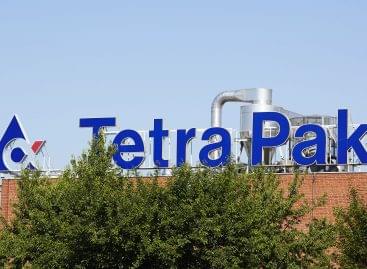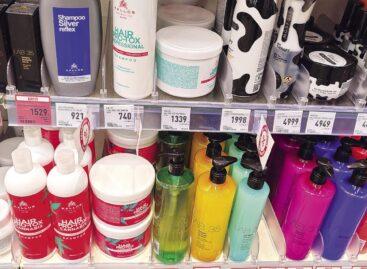Strong headwind in the juice market
This article is available for reading in Trade magazin 2024/2-3
NIQ data reveals: the FJND market grew by 6.8% in value, with a 23.7% decline in volume sales in 2023 YTD to December 2023.

Anna Kisházi
marketig manager
Sió-Eckes
“The market was also characterised by a strong competitive environment and a high number of innovations last year”, says Anna Kisházi, marketing manager of Sió-Eckes Kft.
“Due to the poor orange yield worldwide, concentrate prices increased at a global level”, adds Márton Radics, brand manager of Szentkirályi Magyarország. EPR, which will be introduced from 1 July 2023, will impose significant additional costs on manufacturers. Preparations for the DRS system, which is going to launch on 1 January 2024, have also strongly determined the focus of the entire market in the past year.

Vilmos Várkonyi
group brand manager
Maspex Olympos
“Brands have had to prepare for the extra costs, packaging changes and possible new trends in consumption in 2024 as a result”, explains Vilmos Várkonyi, senior group brand manager at Maspex Olympos Kft.

Adrienn Horváth
marketing director
Márka Üdítőgyártó
“In spite of the high energy, raw material and packaging material prices, market players are trying to keep transfer prices low in an increasingly competitive market”, informs Adrienn Horváth, marketing director of Márka Üdítőgyártó Kft.

Dániel Nagy
sales manager
DÉR Juice
Dániel Nagy, sales manager of DÉR Juice: “Market players have reacted in different ways to the significant changes.
Some have changed their formulations, even reducing fruit content very much, while others now offer a smaller product selection”, recalls Melinda Kun, brand manager of Rauch Hungária Kft.
Expanding portfolio and developments both inside and outside
The SIÓ brand continues to be the market leader among brands in the juice sector. Based on positive market data, there is strong consumer demand for a fruit drink range with no added sugar, and traditional and exciting flavours. SIÓ has also expanded the Hohes C SuperShots range, which is a real flagship in the category. This year the company continues to innovate in the premium SIÓ NATURA line, which focuses on naturalness, plus their products for children will also remain important.
Last year Szentkirályi expanded its portfolio with the 1 litre PET bottle. Owing to the increase in production costs and the introduction of DRS in 2024, they want to broaden their product selection in terms of both fruit content and packaging, so that they can offer consumers alternatives even with the price increases. Szentkirály will be concentrating on changes in the packaging and content of their juices in the near future.
Strengthening in the HoReCa channel
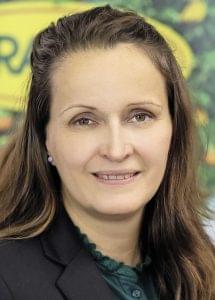
Melinda Kun
brand manager
Rauch Hungária
Sales by Rauch Hungária Kft. were up 12.7% in 2023, double the market average. Both consumers and partners like the company’s Bag in Box products for the HoReCa segment – they offer a full service, providing machinery, accessories and maintenance support, with continuous product availability, as well as assistance in building custom systems on demand. The Happy Day brand is becoming increasingly popular in this segment, a popular cocktail staple thanks to its large selection of flavours.
Maspex Olympos Kft.’s small bottle Topjoy range is dominant in retail sales. In 2023 they added many new products to this line, including two non-alcoholic cocktails (tequila and white rum flavoured fruit drinks), called Margarita and Sunset. As a seasonal product, Topjoy Lemonade 0.4l fruit drinks in lemon-lime, lemon-raspberry and lemon-watermelon flavours were also popular in 2023. For those who prefer the drink carton format, they offer the Fruits of the World range, available in cactus, watermelon and mango variants.
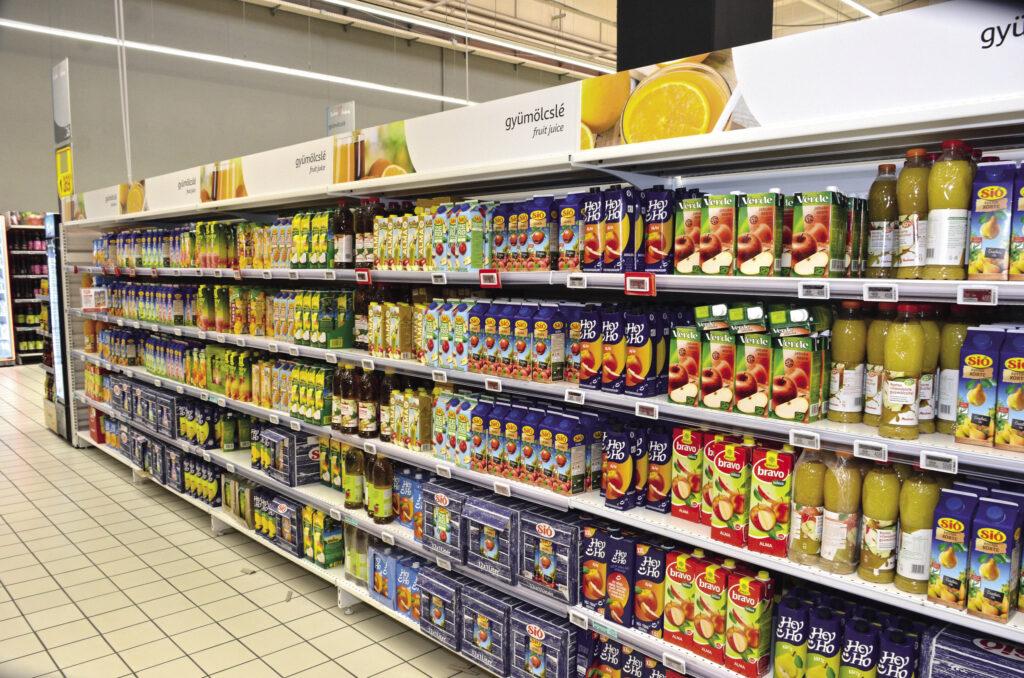
Own-brand products have also been a hit, their market momentum has waned as their price advantage has declined
Tradition and innovation
The transformation of consumer behaviour is a clear and visible trend, with consumers trying to reduce spending in the face of inflation, while at the same time seeking to minimise the number of shopping compromises. Tobacco shops and vending machines are more and more important in sales. As for private label products in general, in 2023 their volume sales declined a little more than the total market, and they failed to match the market growth in value sales. Discounters are becoming more open to branded products, in order to have an optimal assortment composition.
The Multivitamin flavour is still the most popular in the Márka Fruitica fruit drink range of Márka Üdítőgyártó Kft., in both 1.5l and 0.5l format. The company is working to become a major soft drink player in Central and Eastern Europe, while also increasing market share in Hungary. Their aim is to preserve and revive old flavours, times and memories, while at the same time appealing to new generations and responding to current consumer and consumption trends too.
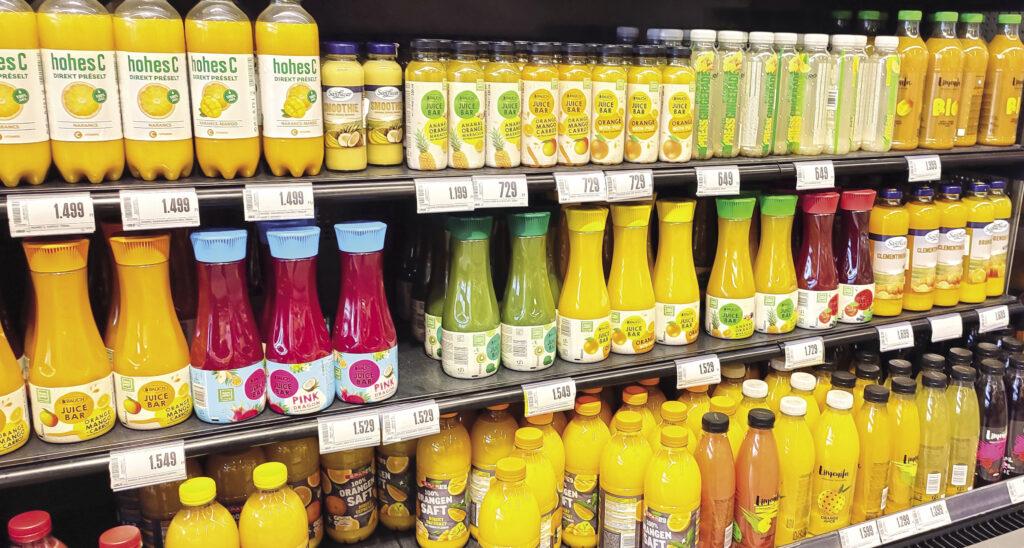
For carton packaging, the tax has risen to its eightfold compared to the previous product charge – this could lead to a broadening of packaging alternatives
Focus on health consciousness
Consumers are loyal to classic flavours but they also like exotic fruits, exciting flavour combinations or products with extra added ingredients – in line with the new trends. For health-conscious consumers, the absence of additives and the nutritional content of the products have remained important. Last year DÉR Juice realised a double-digit sales growth with all of its product formats. At the beginning of 2023, they put the DÉR Juice Orange Juice with Apple product on the market in 0.33l size. DÉR Juice’s product innovations will keep satisfying the needs of health-conscious consumers. In addition to juices, they plan to launch other fruit-based products and new formats too. //
Fruit juice: smaller price advantage for private labels
Between December 2022 and November 2023, HUF 87bn was spent on classic fruit juice in retail outlets, which was an 8% sales increase. However, the 35% rise in price levels for the category has led to a 20% plunge in volume consumption compared to the same period of last year.


Guest writer:
Zsófia Horváth
jr. analytic insights associate
NIQ
Branded products realise just over two-thirds of sales in forint, while private label products account for 32% of the market. The rate of price level increases for private label products (42%) exceeded that of private label juices (30%), narrowing the price gap that had been noticeable in previous years.
From the different segments nectars, which were previously the most dominant, have seen a spectacular decline, with a 17% drop in value sales due to both falling demand and changes in product mix. As a result, their share in value terms reduced by more than 8 percentage points to 29%.
In product size the on-the-go segment continues to perform better. Products in this segment – these are smaller than 0.75 litres – grew by 11% in value terms and decreased less in volume (-12%) than bigger products. Apple, orange and peach flavours are the best-selling. //
Households spend twice as much on fruit juice in a year than on ice tea
This year the per litre price of fruit juice grew by 31% compared to the same period last year, outpacing the 28% inflation in the overall FMCG market, but lagging behind the price rise in the carbonated soft drinks market, which was 33%, and the ice tea category, where the price increase was 34% vs. the the November MAT 2022 prices.
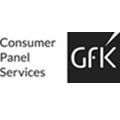
19% fewer litres of fruit juice were sold this year, resulting in a category growth of only 6% in value terms. Volume sales were down 9% for carbonated soft drinks and 13% for ice tea.

Guest writer:
Zsombor Ecsedi
analyst
Consumer Panel Services
Purchased less frequently
The customer base for fruit juice was unchanged from the previous year, with penetration remaining at 94%. However, the buying frequency has also dropped. One year ago the average household bought fruit juice 27 times, but this year only 24 times – a decrease of 11% for the category. The average sum spent on a fruit juice purchase was HUF 700 last year, rising to HUF 840 this year, while the quantity purchased per occasion decreased by 9% (from 2.05 litres to 1.87 litres).
Mixes lead
In terms of flavour, mixes are the most popular – in penetration, value and volume alike – with a stable penetration of 82%. This segment accounts for 40% of the fruit juice category in both value and volume sales, up 1 percentage points on last year. By fruit content 100% fruit juices remain the most popular, accounting for around 37% of the market in value and 30% in volume. Products with 12% fruit content have become more attractive to consumers due to their price level, despite the fact that they have seen the biggest average price increase of 43%! Discounters have the greatest potential among sales channels, with customers turning to them for low prices. These stores account for half of all fruit juice sales and 77% of all customers buy juice in this channel. //
Related news
Tetra Pak and García Carrión introduce the world’s first paper-based protective layer for juice packaging and launch new packaging development
🎧 Hallgasd a cikket: Lejátszás Szünet Folytatás Leállítás Nyelv: Auto…
Read more >From hair roots to hair volume
🎧 Hallgasd a cikket: Lejátszás Szünet Folytatás Leállítás Nyelv: Auto…
Read more >Price isn’t enough, promotions and re(in)novation are lifting the plane
🎧 Hallgasd a cikket: Lejátszás Szünet Folytatás Leállítás Nyelv: Auto…
Read more >Related news
Christmas shock in commerce: for the first time, we can pay with bank cards in fewer places
🎧 Hallgasd a cikket: Lejátszás Szünet Folytatás Leállítás Nyelv: Auto…
Read more >Hungarian Confectionery Manufacturers Association: trends in 2025 and prospects for 2026
🎧 Hallgasd a cikket: Lejátszás Szünet Folytatás Leállítás Nyelv: Auto…
Read more >Most grocery chains will be open until noon on December 24th
🎧 Hallgasd a cikket: Lejátszás Szünet Folytatás Leállítás Nyelv: Auto…
Read more >
